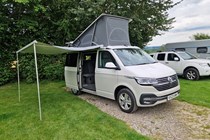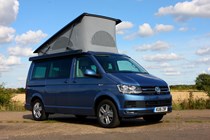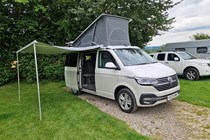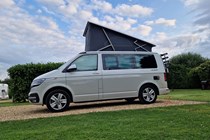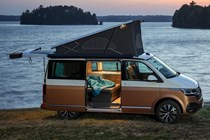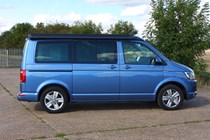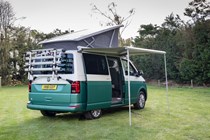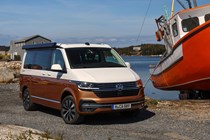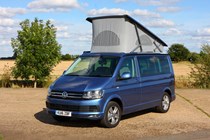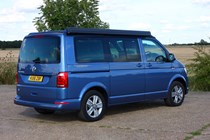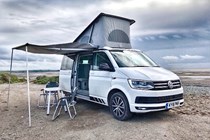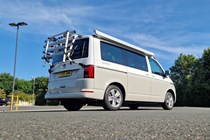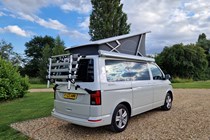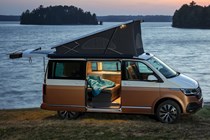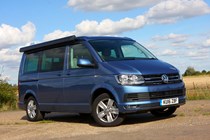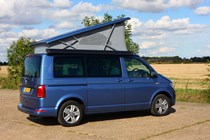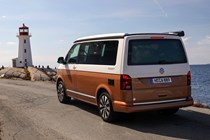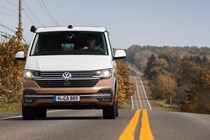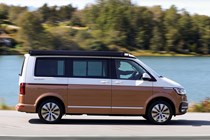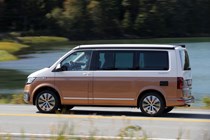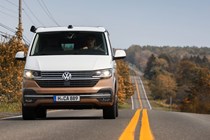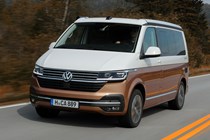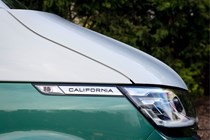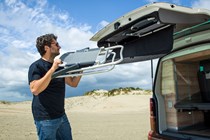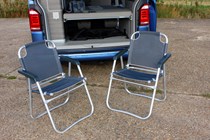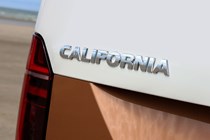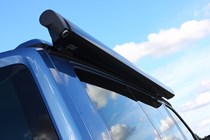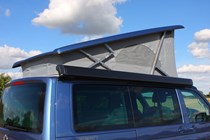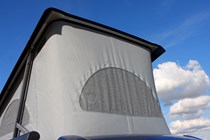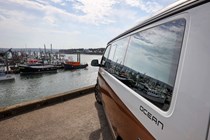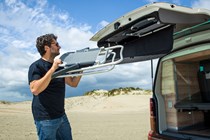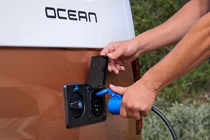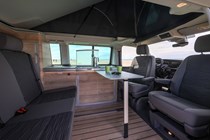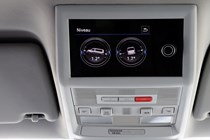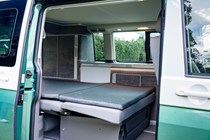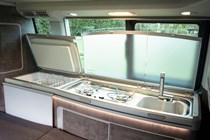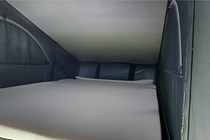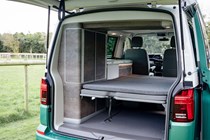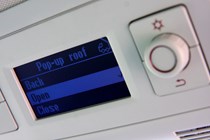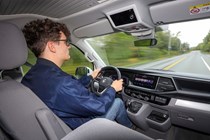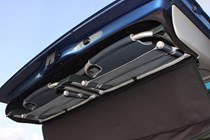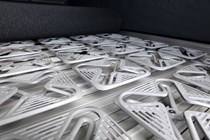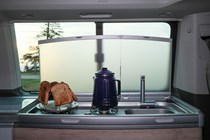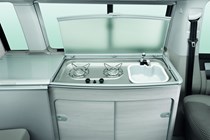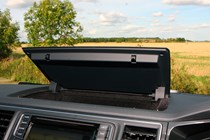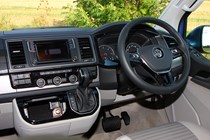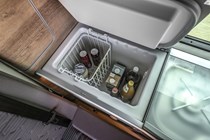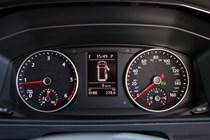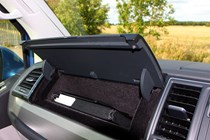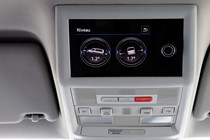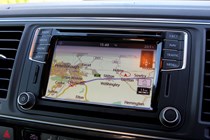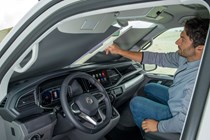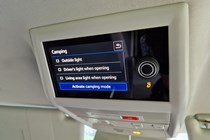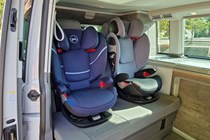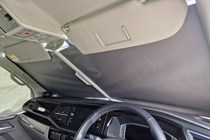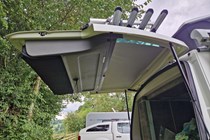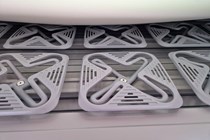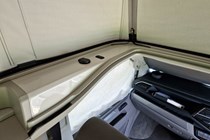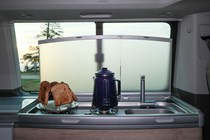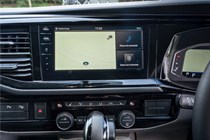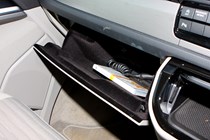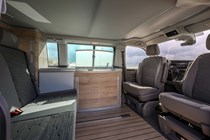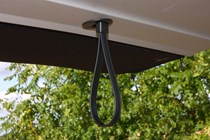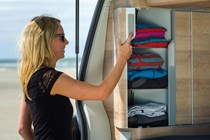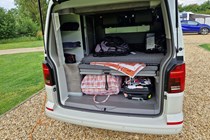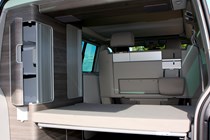
Volkswagen California Estate (2015-2024) engines, drive and performance
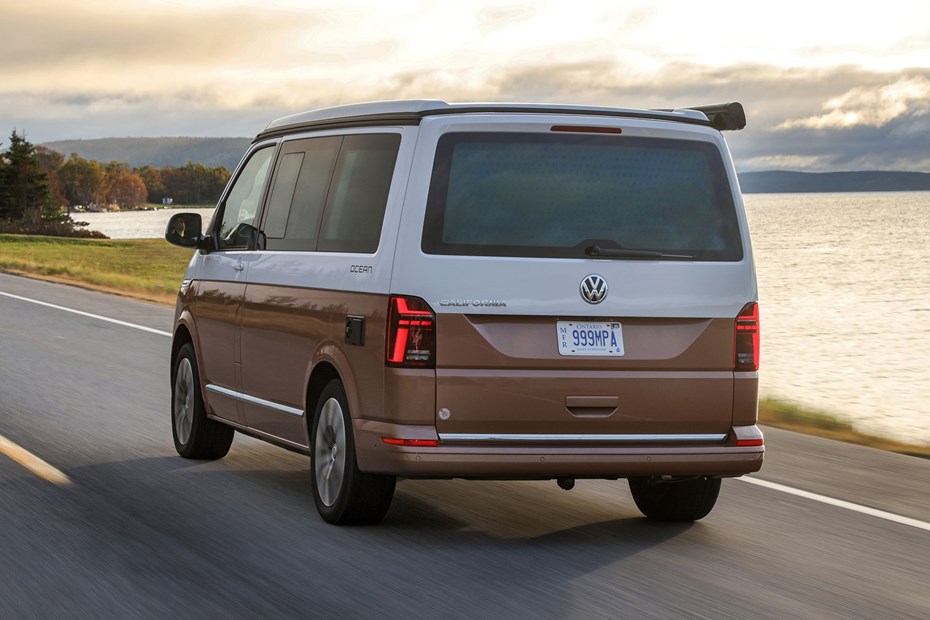
- Powered by 2.0-litre engines with 102-204hp
- Performance is more than adequate for a camper van
- Easy to drive, but not always very sophisticated
California T6 engine details
If you’ve only got the minimum to spend on a T6-generation VW California prepare to be patient: 0-62mph in the original entry-level Beach variant takes 19.4 seconds. It’s powered by a 2.0-litre TDI diesel engine with a measly 102 horsepower and it weighs more than 2.3 tonnes, so that shouldn’t really come as a surprise.
This heft doesn’t stop 150hp models shrugging off 0-62mph in around 14.2 seconds, however, (14.5 seconds with DSG), while the 204hp engine goes 0-62mph in 10.8 seconds (10.9 seconds with DSG). That’s quick enough to give plenty of regular car drivers a surprise, if you don’t mind risking your crockery.
2019-on California 6.1 facelift engine details
Performance figures for the 2019-onwards facelift, which initially came with 150hp or 199hp and DSG as standard but shortly reverted to the full 204hp at the top end, are very close to the previous versions. The 0-62mph time rises by 0.1 seconds to 14.3 for the lower-powered model while the 199hp model requires 11.3 seconds for the same event.
Upgraded to the latest emissions standards, there is little difference between the way these are early engines perform on the road, though we have always impressed with the more powerful models’ refinement during testing. Confusingly, the latest 204hp model officially takes 11.9 seconds to go 0-62mph, which just tells you that outright power isn’t everything.
Regardless of age, all these diesel engines are turbocharged, with the most powerful 199hp and 204hp versions featuring twin-turbo technology to achieve their increased performance.
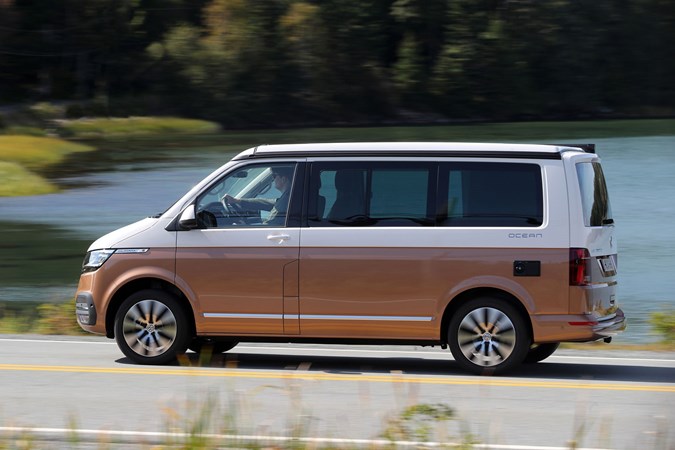
Hold on a minute…
The California Ocean weighs 200kg more than the California Beach due to all its extra equipment, yet VW quotes the same acceleration times for both 150hp variants. This is largely excused by the engine’s sizeable 340Nm of torque (pulling power), which helps shrug off the extra pounds from a standing start.
On the move, you are still likely to find the Beach a more responsive driving experience – but we imagine most California buyers will happily trade this added performance for the extra convenience and equipment of the Ocean or the 2019-onwards Coast model.
Maximum torque for the 102hp engine is 250Nm, while the 199hp and 204hp motors make 450Nm, and feel faster than their 0-62mph times suggest. Even so, if you like your mobile home with added speed note that the Mercedes Marco Polo comes with a 237hp turbodiesel and a nine-speed automatic transmission as standard now. It does 0-62mph in 8.8 seconds and feels appreciable quicker still.
What about four-wheel drive?
VW’s 4Motion four-wheel drive system is available as an upgrade to the standard front-wheel drive on the 150hp and 204hp diesels on pre-facelift Ocean specification; after the facelift it’s only optional on the 199hp or 204hp Ocean.
This too puts a dent in raw performance figures (and a bigger one in the fuel economy), but if you plan to use your California all year round, you may well find the extra traction it offers worth the expense. It’s not a heavy duty system, but it will certainly make light work of a slippery camping ground.
Avoid being too heavy-footed, however, as we’ve found that even with 4Motion a twin-turbo California will still spin its front wheels if you stamp on the accelerator. More on this in a moment.
And the petrol engines?
Added in July 2017 and discontinued around nine months later, these are badged TSI, and also offer 150hp and 204hp from turbocharged 2.0-litre engines. Beach models were again limited to 150hp only, while the 204hp version comes with the DSG auto as standard.
There is no four-wheel drive option for petrol-powered Californias. Which is probably for the best, as they drink quite enough fuel when only driving the front wheels. As such, if you do long distances, diesel remains the best choice.
But as we can attest having spent several months driving an equivalent petrol-powered Transporter long-term test vehicle, the TSI petrol engines are sweet revving and rather fun. Quieter and nicer to listen to than their TDI equivalents, they also came with lower list prices. So if you don’t mind the extra running costs and stopping at fuel stations more regularly they are still worth a look secondhand.
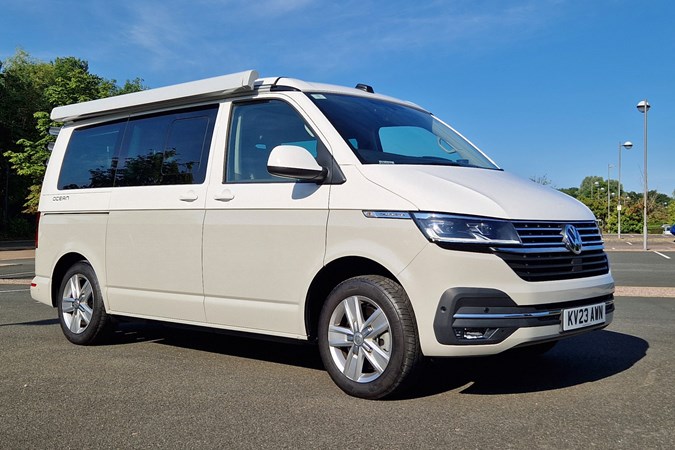
What’s the VW California like in the corners?
It’s pretty obvious that this is a tall, upright vehicle that places a priority on practicality rather than agility, so we don’t imagine many buyers approach a VW California expecting it to go round corners like a regular family car.
But even compared with the Volkswagen Caravelle – which is based on the same Transporter van – we;ve found that you need to be relatively circumspect, as though they look similar the camper is carrying a lot more weight at roof level.
The pop-up canopy, the mattress and the associated reinforcement all serve to pull the centre of gravity higher in the California, which means it’s more eager to lean over in the corners.
Since the steering is well-judged in both original hydraulic and facelift-onwards electrically power-assisted form, we never found ourselves getting so carried away that this top-heavy nature becomes a significant issue. But the front wheels do quickly become rather scrabbly if you apply to much acceleration too quickly.
This aside, the California is a reassuringly easy vehicle to drive, given its size, and you should arrive at your destination feeling relaxed. Opt for a more powerful engine and the California’s competence is such that you’re unlikely to be concerned about holding up too many other motorists on the way, either.
Certainly it’s easier to handle (and faster) than a car with a caravan. That said, we’re still expecting the new Multivan-based California to improve the driving experience significantly, and we find the Mercedes-Benz Marco Polo offers greater sophistication, comfort and performance, thanks in no small part to its rear-wheel drive layout.


